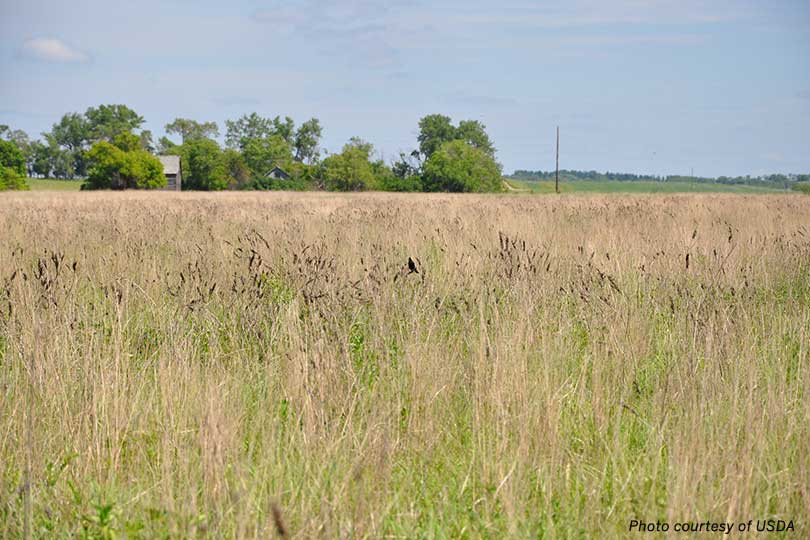The U.S. Department of Agriculture (USDA) announced new conservation opportunities for farmers and ranchers through the Conservation Reserve Program (CRP). The announcement includes new CRP practices to protect water quality and adds an additional 1.1 million acres targeted to benefit wildlife, pollinators and wetlands.
“The Conservation Reserve Program is an extremely popular voluntary program that offers producers and landowners a wide variety of opportunities to prevent erosion, protect wildlife habitat and reduce nutrient runoff,” Agriculture Secretary Tom Vilsack said in a release. “With the program close to the legal enrollment limit of 24 million acres, USDA has been working to use all of the tools at our disposal to maximize benefits by combining multiple soil, water and wildlife objectives in the areas where it is needed most.”
Vilsack unveiled a new conservation initiative known as Clean Lakes, Estuaries and Rivers (CLEAR) that will add new tools to CRP that can help to improve water quality. USDA said CLEAR will help landowners with the cost of building bioreactors and saturated buffers that filter nitrate and other nutrients from tile-drained cropland.
The department said early estimates indicate that CLEAR could help to reduce nitrate runoff by as much as 40 percent over traditional conservation methods. CLEAR may cover up to 90 percent of the cost to install these new practices through incentives and cost sharing. USDA said these new methods are especially important in areas where traditional buffers have not been enough to prevent nutrients from reaching bodies of water.
The agency will also add an extra 1.1 million acres to a number of key CRP practices that are critically important to wildlife and conservation. These include 700,000 acres for the State Acres for Wildlife Enhancement (SAFE) efforts to restore high-priority wildlife habitat tailored to a specific state’s needs. In addition to SAFE, 300,000 acres will be added to target restoration of wetlands, which are nature’s water filters, and 100,000 acres for habitat for pollinators, which support 30 percent of agricultural production.
The continued strong demand for CRP, combined with the limited acreage available for enrollment and lower land rental rates, allows USDA to modify certain program components without affecting the integrity of the program. Signing incentives are being reduced by $25 per acre on certain practices for fiscal 2018 enrollments (incentives are currently between $100 and $150 per acre), and a cap on the maximum soil rental rate is being instituted for continuous CRP at $300 per acre. The savings from these changes are being reinvested into CRP, including the additional acres for SAFE, pollinator habitat and wetland restoration.
Click here to learn more about USDA’s conservation programs.

